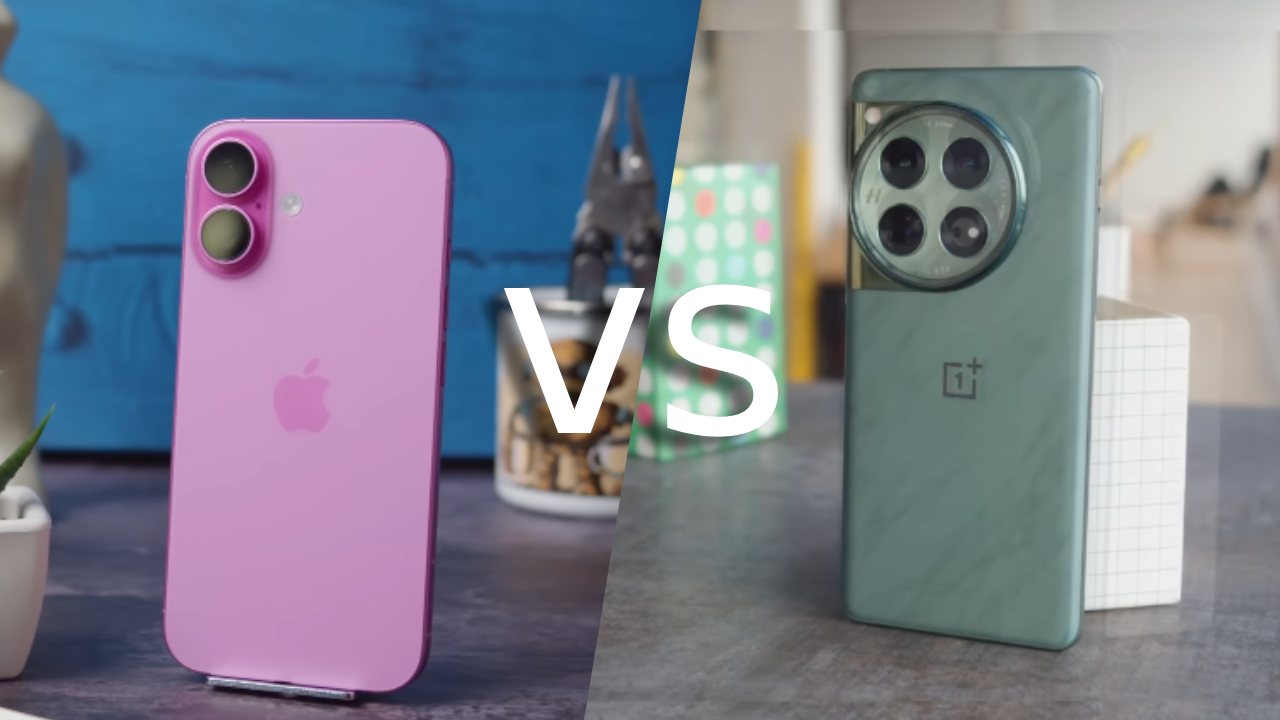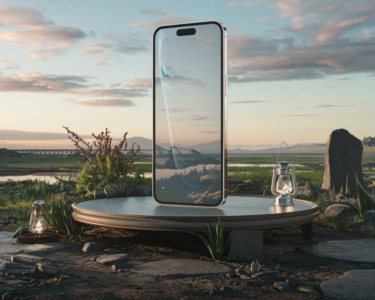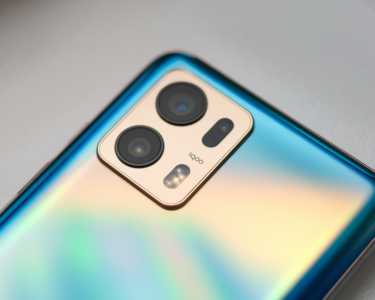After Apple introduced the iPhone 16 series, many were eager to compare these devices with top-tier Android offerings, with the OnePlus 12 being a key contender.
At present, both smartphones are premium options worth considering in the high-end market. But when placed side by side, is the iPhone 16 a better choice than the OnePlus 12?
iPhone 16 has a sleek Camera Control button (iPhone 16 vs OnePlus 12)
In terms of aesthetics, the OnePlus 12 and iPhone 16 showcase distinct appearances that users can easily differentiate. Specifically, while the OnePlus flagship has slightly curved edges on both the display and the back to offer a more comfortable feel, the iPhone 16 comes with a flat frame, back, and screen. Although this flat design compromises some comfort.
it aligns with the 2024 trend, making it appear more stylish and striking.
At the rear, the iPhone 16 features the familiar square camera module in the top left, whereas the OnePlus 12 boasts a larger, circular camera setup. Additionally, OnePlus phones maintain the notification slider seen in earlier iPhone models.
While the iPhone 16 has adopted the Action Button, allowing for more customization and introducing a new Camera Control button, enhancing the photography experience.
Both devices use an aluminum frame combined with glossy glass on the front and back. However, the OnePlus phone has an IP65 rating, which is lower than the iPhone’s IP68 standard.
On the flip side, the OnePlus 12 offers the Aqua Touch feature, enabling the screen to function in the rain. Moreover, the OnePlus includes an IR blaster, allowing users to control TVs, air conditioners, or other appliances with minimal setup.
OnePlus 12 screen supports 120Hz refresh rate (iPhone 16 vs OnePlus 12)
The OnePlus 12 is outfitted with a 6.82-inch LTPO AMOLED display, boasting a resolution of 1440 x 3168 pixels for a pixel density of 510ppi, with an adaptive refresh rate of 1-120Hz, HDR10+ support, and a peak brightness of 4,500 nits.
This display also incorporates PWM dimming technology to lessen eye strain and OnePlus’ AquaTouch feature, which allows the screen to be used when wet. Read: iPhone 16 Launch: Price in India, Pre-Order, Sale Date, and Key Details
In contrast, Apple restricts its 120Hz refresh rate, branded ProMotion, to its Pro models. This means the iPhone 16 is limited to a standard 60Hz refresh rate.
At 6.1 inches, the iPhone 16 features a Super Retina XDR display with Apple’s Dynamic Island. The display can reach a peak brightness of 2,000 nits outdoors, which, while lower than the OnePlus 12, is more than sufficient for comfortable use in various lighting conditions. Its resolution is 1179 x 2556 pixels, providing a pixel density of 460ppi.
In theory, the OnePlus 12 delivers superior display quality, particularly in terms of brightness, detail, sharpness, and fluidity.

A18 Bionic Chip vs Snapdragon 8 Gen 3 (iPhone 16 vs OnePlus 12)
The iPhone 16 is powered by Apple’s A18 Bionic chip, which promises notable enhancements in performance and energy efficiency thanks to its second-generation 3nm architecture, designed to support Apple Intelligence.
The A18 chip also features a revamped 16-core Neural Engine, optimized for larger generative models, and runs machine learning models up to twice as fast as the A16 Bionic in the iPhone 15.
On the other side, the OnePlus 12 runs on Qualcomm’s Snapdragon 8 Gen 3, its most advanced chip so far. This chipset includes an updated neural processing unit that is 40% more efficient than before, allowing the device to handle AI tasks swiftly and effectively. However, the OnePlus 12 lacks several AI features, limiting its ability to fully utilize the chipset’s potential.
In terms of performance, both smartphones excel in handling users’ daily tasks effortlessly. Whether it’s multitasking, gaming, or using resource-intensive applications, they both provide a fast, seamless experience.
iPhone 16 introduces Apple Intelligence features (iPhone 16 vs OnePlus 12)
Apple claims that the iPhone 16 was “designed from the ground up for Apple Intelligence,” becoming the first, along with the iPhone 15 Pro series, to offer a suite of advanced AI features.
Unveiled at WWDC24, Apple Intelligence is a personal AI toolkit that merges generative models with personal data to offer users valuable insights and support.
These capabilities include Genmoji, Image Playground, an AI-powered writing tool for refining content, and an improved Siri that responds more naturally.
On the other hand, the OnePlus 12 doesn’t offer such AI-driven features. Despite utilizing the powerful Snapdragon 8 Gen 3 chip, OnePlus has yet to fully leverage the potential of the chipset to introduce compelling AI tools.
OnePlus 12 offers a more versatile camera setup (iPhone 16 vs OnePlus 12)
The OnePlus 12 sports a triple rear camera system, fine-tuned by Hasselblad. This includes a 50MP main sensor, a 64MP telephoto lens with 3x optical zoom, and a 48MP ultra-wide camera.
Despite lacking the AI-powered photo editing tools found in the Galaxy S24 or Pixel 9, the OnePlus 12 still produces top-notch photos.
In comparison, the iPhone 16 features a dual-camera system with a 48MP Fusion main sensor and an upgraded 12MP ultra-wide lens. Apple describes the Fusion camera as offering the functionality of two cameras in one, enabling users to zoom in and better frame shots, while the ultra-wide lens captures up to 2.6 times more light for improved image quality.
The iPhone 16 also introduces a new Camera Control button, which allows users to adjust zoom, exposure, and depth of field by simply sliding their finger across the button.
Overall, the OnePlus 12 has a more feature-packed camera system, though the iPhone 16 still provides a unique photography experience with its 48MP main camera and Camera Control button.
OnePlus 12 supports faster charging (iPhone 16 vs OnePlus 12)
One of Apple’s long-standing weak points has been fast charging, and the iPhone 16 is no different. Despite the MagSafe wireless charging capability being upgraded to 25W, the phone can only reach 50% charge after 30 minutes using a wired connection.
Meanwhile, the OnePlus 12 supports 80W SUPERVOOC fast charging, enabling the phone to reach 100% charge in just 26 minutes. It also offers 50W AIRVOOC wireless charging, although users will need to purchase a separate charger for this feature.
Conclusion
As always, the decision between an iPhone and an Android device depends largely on the ecosystem you prefer. Both the iPhone 16 and OnePlus 12 have their strengths and weaknesses.
While the OnePlus 12 impresses with its 2K, 120Hz display, versatile camera system, and fast charging, the iPhone 16 stands out with its Apple Intelligence AI capabilities.
Additionally, the iPhone’s superior build quality with IP68 water resistance makes it a solid choice. Ultimately, your decision will depend on your specific needs and preferences!
Here’s a comparison chart of key features between the iPhone 16 and OnePlus 12:
| Feature | iPhone 16 | OnePlus 12 |
|---|---|---|
| Design | Flat frame, back, and screen | Curved screen and back for better grip |
| Camera Design | Square camera module (top-left) | Circular camera module (centered) |
| Camera Features | 48MP Fusion main sensor, 12MP ultra-wide, Camera Control button | 50MP main sensor, 64MP telephoto, 48MP ultra-wide (Hasselblad-tuned) |
| Display | 6.1-inch Super Retina XDR, 60Hz refresh rate, 1179 x 2556 pixels, 460ppi, 2,000 nits brightness | 6.82-inch LTPO AMOLED, 1-120Hz adaptive refresh rate, 1440 x 3168 pixels, 510ppi, 4,500 nits brightness |
| Processor | A18 Bionic (3nm), 16-core Neural Engine | Snapdragon 8 Gen 3 (with NPU), 40% more AI efficient |
| AI Features | Apple Intelligence (Genmoji, Image Playground, advanced Siri) | Lacks advanced AI features |
| Build Quality | Aluminum frame, glass back, IP68 rating | Aluminum frame, glass back, IP65 rating, Aqua Touch feature |
| Charging Speed | MagSafe 25W wireless charging, 50% charge in 30 minutes (wired) | 80W SUPERVOOC, 100% charge in 26 minutes, 50W AIRVOOC wireless charging |
| Battery Life | Similar to iPhone 15 | Slightly longer due to faster charging |
| Operating System | iOS 17 | OxygenOS (based on Android 14) |
| Unique Features | Apple Intelligence, Camera Control button | Aqua Touch, IR blaster (remote control) |
| Water/Dust Resistance | IP68 | IP65 |
| Price | Premium pricing typical of Apple | Typically more affordable than iPhone |
This chart breaks down the major features so you can compare the two phones easily!
Both the iPhone 16 and OnePlus 12 have their strengths, so the “best” phone really depends on what you’re looking for. Here’s my take based on key factors:
What is my opinion iPhone 16 vs OnePlus 12:
Display and Design (iPhone 16 vs OnePlus 12):
- If having the best display is your top priority, the OnePlus 12 excels with its larger 6.82-inch LTPO AMOLED screen. It offers a higher resolution (1440 x 3168 pixels) and a 120Hz adaptive refresh rate, ensuring smoother scrolling and better visuals, especially for gamers or people who watch a lot of videos. The display also reaches an impressive 4,500 nits of brightness, making it easier to view content in bright outdoor conditions. One unique feature is the Aqua Touch, which lets you use the screen even when it’s wet—a nice touch for outdoor or rainy environments.
- On the other hand, the iPhone 16 has a smaller 6.1-inch Super Retina XDR display that is sharp and crisp, but it’s limited to a 60Hz refresh rate. While that’s enough for most users, it’s a step behind the fluidity you get from the OnePlus 12. Its Dynamic Island and excellent color accuracy make the iPhone’s screen enjoyable, but for those who care about higher refresh rates and extreme brightness, the OnePlus 12 leads in this area.
Camera Capabilities (iPhone 16 vs OnePlus 12):
- If photography is important to you, both phones perform exceptionally well but cater to different needs. The OnePlus 12 offers a more versatile triple-camera system, including a 50MP main sensor, a 64MP telephoto lens with 3x optical zoom, and a 48MP ultra-wide camera. The inclusion of Hasselblad tuning ensures more natural color reproduction, especially for those who enjoy post-processing their photos. This setup is ideal for users who need optical zoom and wide-angle shots and like a bit more control over their photography.
- The iPhone 16, while having just a dual-camera system, still stands out with its 48MP Fusion main sensor and a 12MP ultra-wide lens. It’s perfect for people who enjoy a more user-friendly photography experience, thanks to its intuitive Camera Control button. This button allows you to adjust zoom, exposure, and depth of field effortlessly, making it a delight for casual photographers who want high-quality results without too much effort.
In summary, OnePlus 12 is better for camera enthusiasts who want versatility and creative control, while the iPhone 16 is ideal for those who prefer simplicity and ease of use with top-notch quality.
Performance (iPhone 16 vs OnePlus 12):
- Both phones feature cutting-edge processors, with the iPhone 16 powered by the A18 Bionic chip and the OnePlus 12 by the Snapdragon 8 Gen 3. Both chips offer excellent performance, whether you’re multitasking, gaming, or using intensive apps. However, the A18 Bionic is built on Apple’s second-generation 3nm technology, which provides better optimization with iOS and promises higher efficiency, meaning better power management and smoother operations over time.
- The Snapdragon 8 Gen 3 in the OnePlus 12 is also a powerhouse, offering up to 40% more AI efficiency than its predecessor, but OnePlus hasn’t fully utilized this AI potential in the same way Apple has. Apple’s integration of its Neural Engine means faster machine learning operations, which ties into Apple Intelligence and enables more advanced AI features on the iPhone 16.
If you’re looking for long-term performance and AI integration, the iPhone 16 might serve you better. For general performance, especially in apps and gaming, both are neck and neck.
AI and Software Experience (iPhone 16 vs OnePlus 12):
- One of the iPhone 16’s standout features is its focus on AI with the Apple Intelligence suite. This brings innovative features like Genmoji, Image Playground, and a more natural Siri experience, all of which are designed to enhance personalization and convenience. If you’re someone who enjoys AI-driven tools to assist with everyday tasks, productivity, and creativity, the iPhone 16 offers a more advanced and seamless AI experience.
- The OnePlus 12 has excellent hardware, but lacks significant AI enhancements. While it performs well, it doesn’t fully take advantage of the AI capabilities of the Snapdragon 8 Gen 3. If you don’t need advanced AI tools, this might not be a dealbreaker, but if you’re intrigued by the idea of AI making daily tasks easier, the iPhone 16 holds an advantage here.
Charging and Battery Life (iPhone 16 vs OnePlus 12):
- Charging speed is where OnePlus 12 dominates. With 80W SUPERVOOC fast charging, it can fully charge in just 26 minutes, which is a huge convenience for people who are always on the go. It also supports 50W wireless charging, which is among the fastest available. This is ideal for anyone who values quick power-ups and doesn’t want to wait long for their phone to recharge.
- The iPhone 16, while having improved MagSafe 25W wireless charging, still falls short in comparison. It can only reach 50% in 30 minutes using a wired charger, which is slower than the OnePlus 12. So if battery life and fast charging are essential to you, the OnePlus 12 is the superior choice.
Build Quality and Durability (iPhone 16 vs OnePlus 12):
- When it comes to build quality, both phones use an aluminum frame and glass panels. However, the iPhone 16 edges ahead with an IP68 rating, offering better resistance against water and dust. This makes it a more durable option for those who are often exposed to extreme environments or accidental spills.
- The OnePlus 12 comes with an IP65 rating, which still provides decent protection, but isn’t as robust as the iPhone 16. However, its Aqua Touch feature is a nice addition, enabling the phone to be used in rainy conditions, which gives it a unique edge in wet weather scenarios.
My Short opinion about iPhone 16 vs OnePlus 12:
- If you value display quality, fast charging, and camera versatility, the OnePlus 12 is the better choice. Its 2K, 120Hz display is impressive, and the fast-charging technology is miles ahead of the iPhone. The phone’s camera system, especially with Hasselblad tuning, will appeal to users who want more creative control in photography.
- If you’re more interested in AI features, seamless ecosystem integration, and premium build quality, the iPhone 16 is the better option. Its Apple Intelligence features, superior IP68 water resistance, and smooth performance, coupled with iOS, provide a more polished and future-proof experience, especially for those already within the Apple ecosystem.
In conclusion, OnePlus 12 delivers exceptional value and cutting-edge features at a more affordable price, but the iPhone 16 offers a refined, high-quality experience, especially for those who are drawn to Apple’s ecosystem and AI advancements. Ultimately, the best phone for you depends on what matters most—AI and build quality (iPhone) or display, charging, and versatility (OnePlus).





